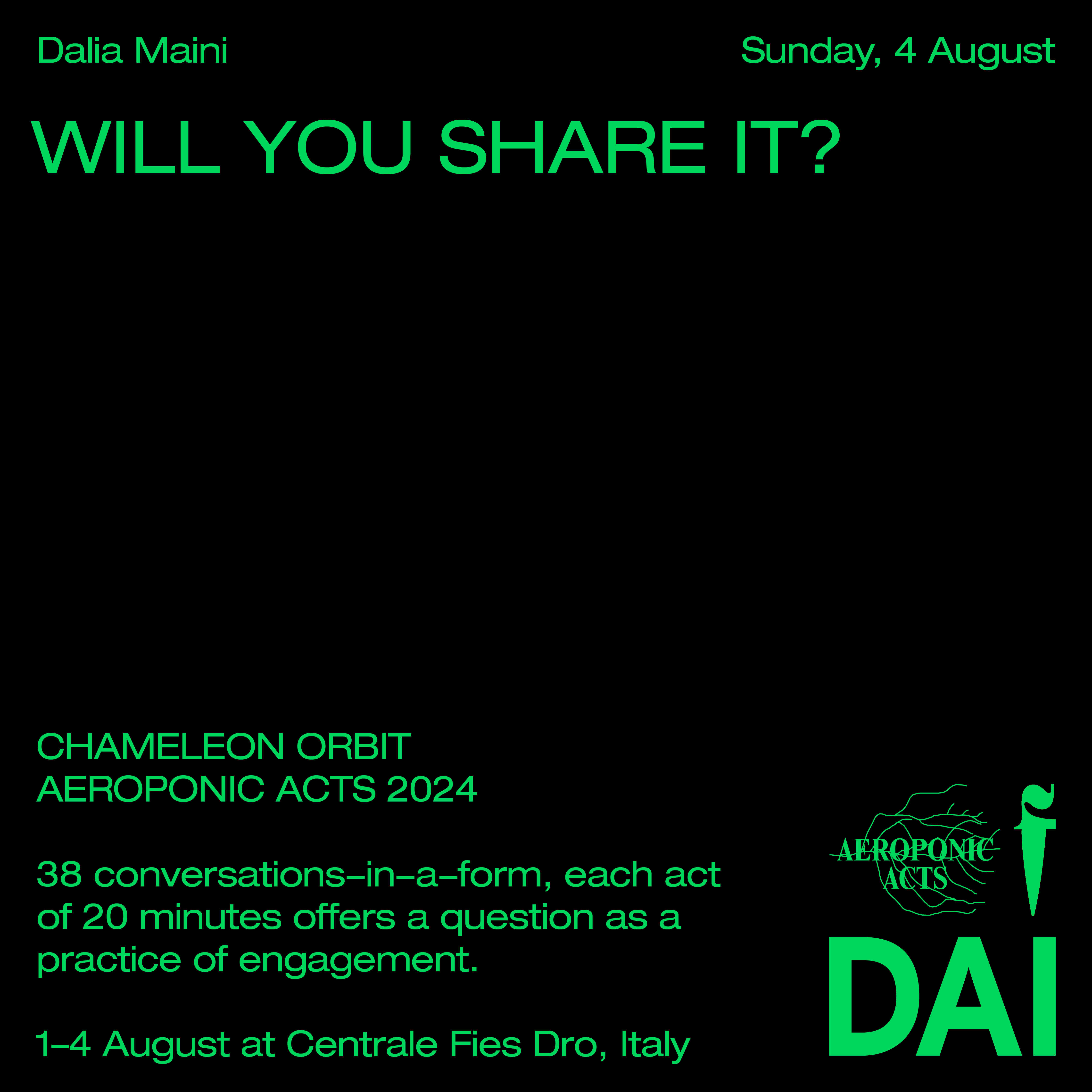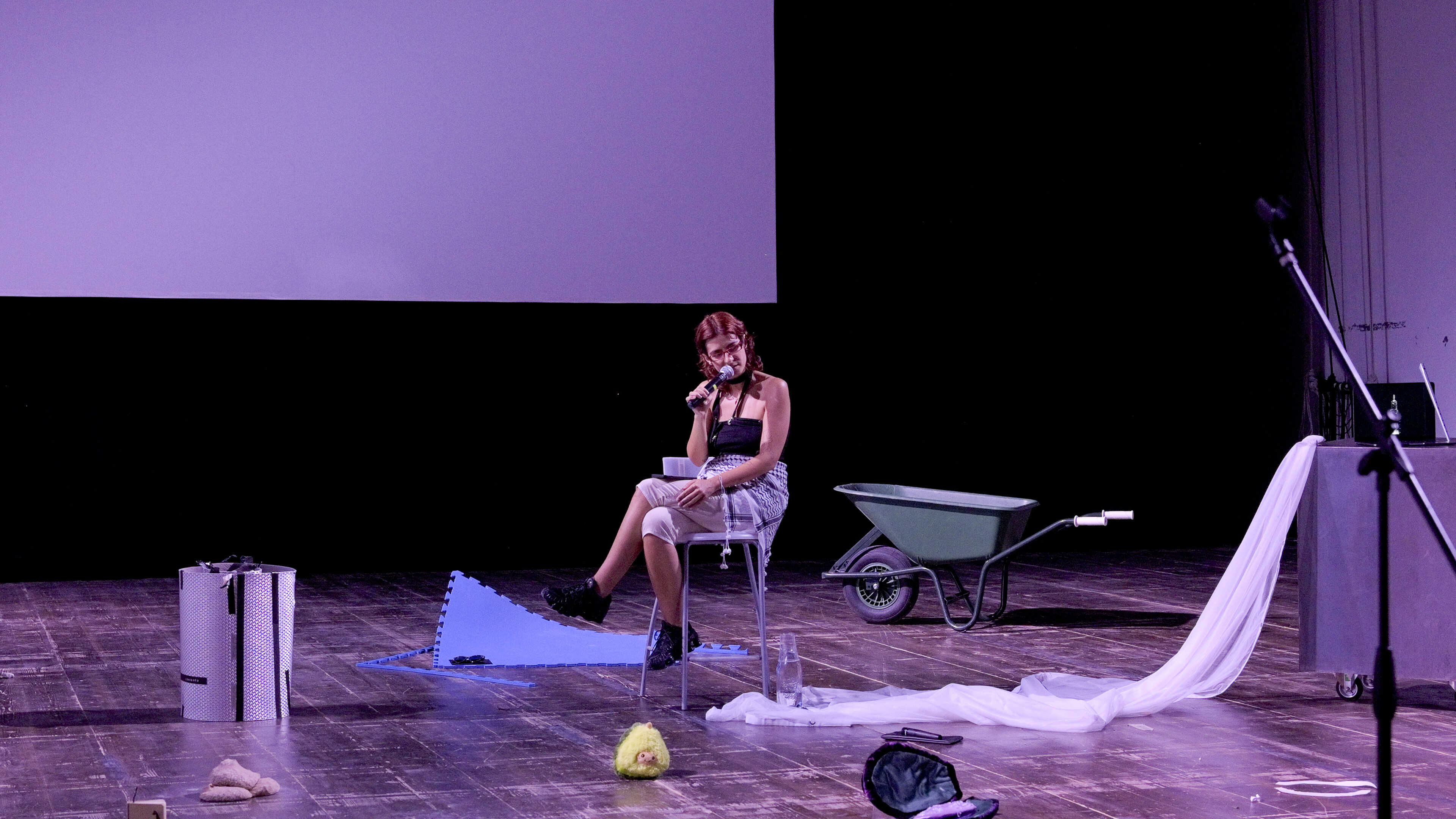Dalia Maini ~ I pass it to you, you pass it to me
To plot is to complot—I can’t tell you what to expect, because every time we are together is messy. Every time we are together we learn to gather emotions to organize language, to bridge the gap between the introvert and the extrovert child nested in our body. We organize so Power cannot tell us how to do so, so Power cannot confuse us with the promise of clarity, so Power cannot block our protest project of deviation, love, and incarnation. We do not need to ask for permission when the language is a mark on the flesh and out loud we overflow. Our mission is to speak to our intimate enemies about forgiveness and compensation, revelation and rebellion. Be our witness, be our accomplice, be our emissary, while we create a story of multiple incompleteness. I pass it to you, you pass it to me is a written-and-spoken word reverberance of encounters between not-yet accomplices.
AEROPONIC ACTS 2024 ~ Chameleon Orbit


